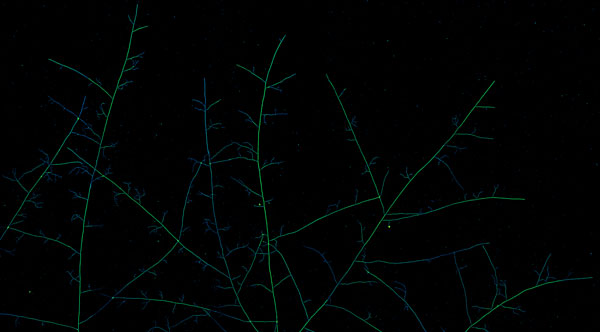Theory suggests that relatives will cooperate more, and compete less, because of an increased benefit for shared genes. In symbiotic partnerships, hosts may benefit from interacting with highly related symbionts because there is less conflict among the symbionts. We studied the effects of symbiont relatedness on their hosts by creating competing or cooperating mycorrhizal fungal networks. The vast majority of land plants are colonized by arbuscular mycorrhizal fungi. The fungi exchange soil bound nutrients such as phosphorus and nitrogen for photosynthetic carbon from the host plant. The fungi form underground networks that can connect roots of different plants. Hyphal fusion, known as anastomosis, can occur among fungi of the same strain and this has the potential to increase resource sharing across the fungal network, which could increase the fitness of the fungi and potentially their hosts. But when fungi are genetically less related, direct antagonism among competing mycorrhizal strains has been shown to lead to negative outcomes for fungal abundance and plant growth.

Figure: High-resolution image of AM fungal network. Image formed after stitching an array of 150 sub-images. The sub-images are taken using a high-resolution camera, together with a 2x long-working distance objective and the fungal network is illuminated with transmitted light. Finally, the image has color ascribed via Lookup table (LUT) using imageJ with Green Fire Blue color palette (Credit: Loreto Oyarte Galvez).
To study host benefit and nutrient distribution, we employed a technique in which we tagged phosphorus rock (apatite) with quantum-dot nanoparticles. Quantum-dots fluoresce in bright and pure colors when excited by UV light, and allow us to track the distribution of phosphorous across the fungal network connecting two root systems. We grew plant-fungal networks in both soil and in vitro root organ cultures in petri plates. The in vitro approach allowed us to quantify the physical fungal network structure by microscopy.
We found that colonization by less-related fungi was associated with increased fungal growth, but lower transport of quantum-dot tagged nutrients across the network, and lower plant benefit. This decrease in nutrient transfer is likely an outcome of increased competition between the different species of arbuscular mycorrhizal fungi - which induced more growth at the cost of reduced nutrient transport and trade. More broadly, our data suggest that decreased genetic relatedness in fungal networks can drive changes in the overall effectiveness of the symbioses. This work has stimulated further interest in how the physical architecture of the network relates to nutrient transfer, and with HFSP funding, we are building an automated imaging system that allows us to simultaneously monitor the growth of 40 plant-fungal networks over space and time.
|
HFSP award information Research Grant - Program (RGP0029/2019): Tracking trade across symbiotic networks Principal investigator: Toby Kiers, Vrije Universiteit, Amsterdam, Netherlands |


































